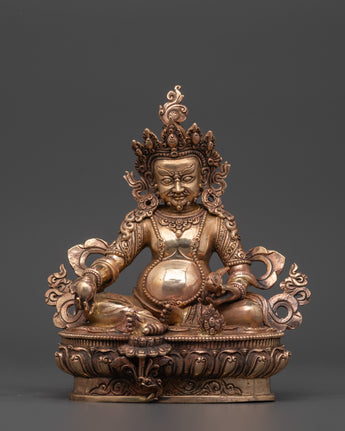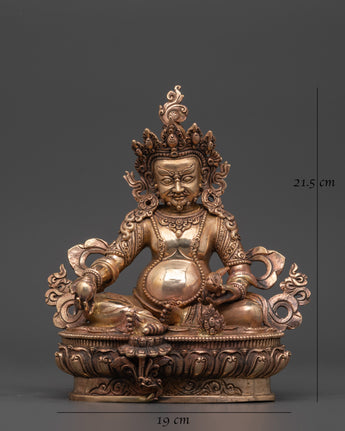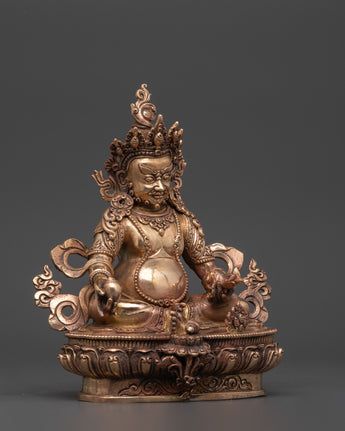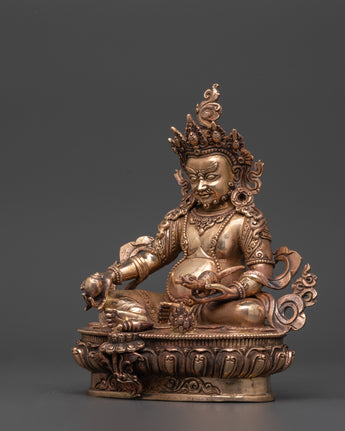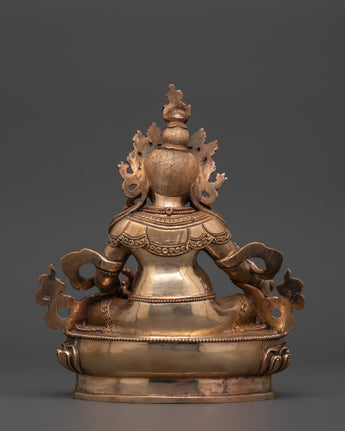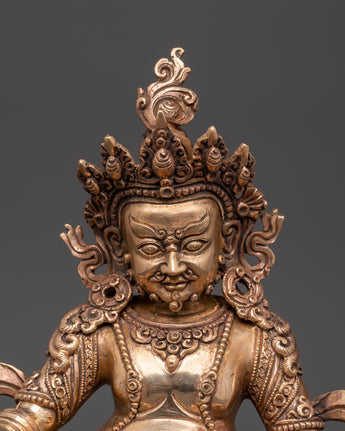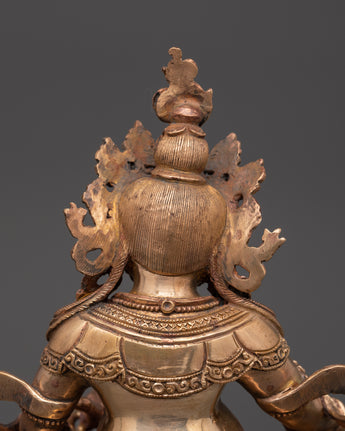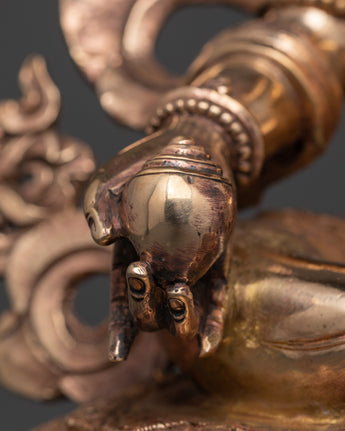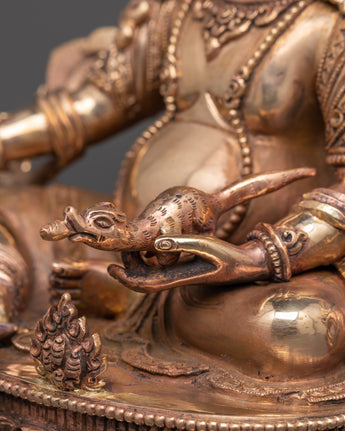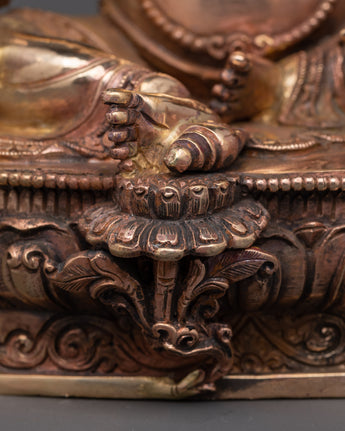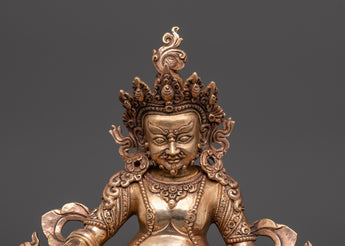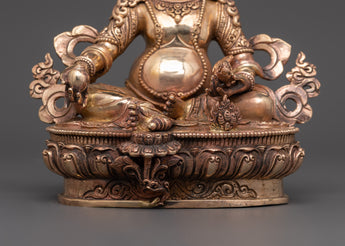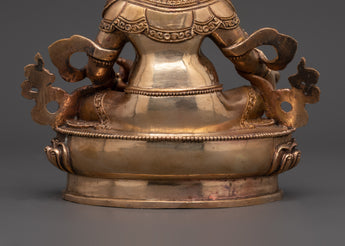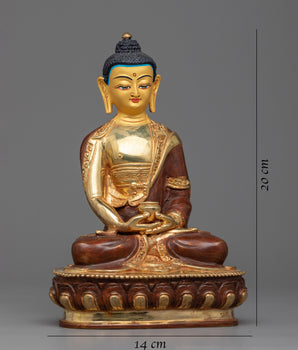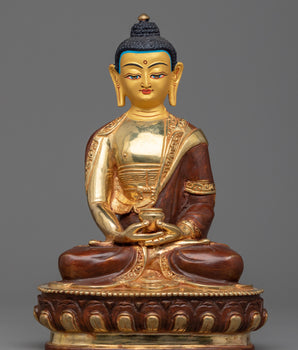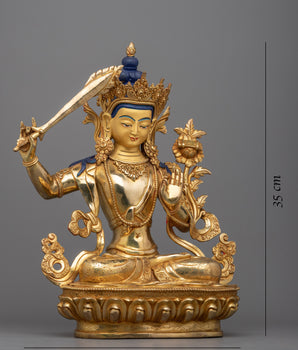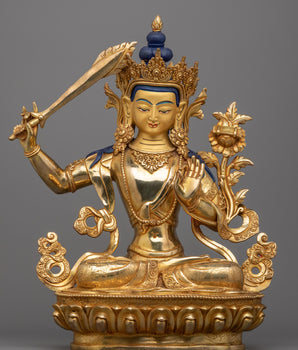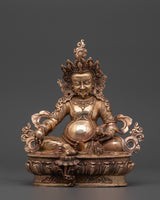
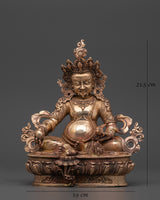

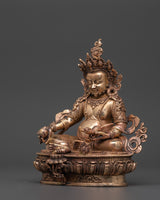
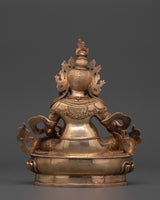
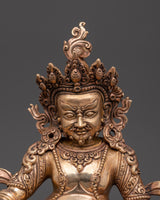
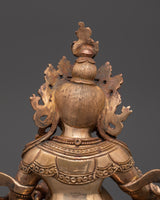
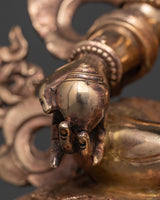
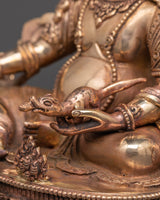
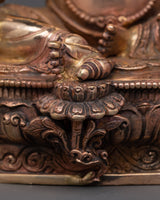
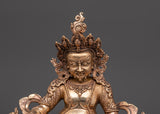
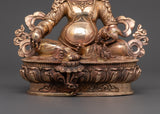
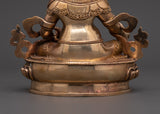
Dzambala Buddhist Wealth Deity Statue | Buddhist Decor for Abundance Rituals

100% AUTHENTIC

HANDMADE

FREE SHIPPING
Dzambala Buddhist Wealth Deity Statue | God of Treasure and Generosity
--------------------------------------------------------
Size: 21.5cm (Height) and 19cm (width)
Weight: 1.63kg
Material: Copper Body
---------------------------------------------------------
About Our Statue :
This finely handcrafted copper Dzambala statue is 21.5cm tall, 19cm broad, and weighs 1.63kg, making it a substantial and powerful addition to any spiritual environment. Dzambala, revered as the God of Wealth in Buddhist and Tibetan traditions, is said to promote wealth, alleviate poverty, and bestow believers with material and spiritual richness. Ideal for personal shrines, meditation altars, and mindful home decor.
Dzambala is depicted as a royal figure seated in a commanding manner, holding a mongoose that emits gems symbolizing generosity and prosperity. His ferocious yet compassionate visage reflects his protective character, shielding against negative forces and barriers related to poverty. Every aspect of this statue, from the intricate crown to the symbolic adornments, represents the rich legacy and artistic craftsmanship of Himalayan craftsmanship.
Introduction To Dzambhala :
Dzambhala is a protective deity associated with wealth and prosperity. Many forms and traditions are associated with this wealthy deity, but he is usually depicted as yellow in color and holding a mongoose in his left hand. This statue has accurate traditional iconography and fine details.
Kubera's Buddhist Sculpture depicts the ruler of riches and the rescuer of the north. Dzambala's benediction and the worth of his practice are worldwide. It helps us to minimize or reduce all calamities and difficulties while increasing all good fortune and pleasure. In Hinduism, Kubera's purpose from the gods was to make believers affluent. This gold-gilded Dzambhala statue is ideal for Vajrayana meditation.
How do you take care of your statues?
Place them at room temperature, avoiding direct sunlight.
Ensure that the area where your statue is placed is entirely free of moisture and dust.
Place it at the highest place on your altar after being consecrated by a Lama/monks. The best practice is to keep them covered inside a glass cabinet.
Do not use your bare hands or any objects with a rough surface to wipe the face. Directly touching objects with the bare hand can smudge the face, leaving scratches.


